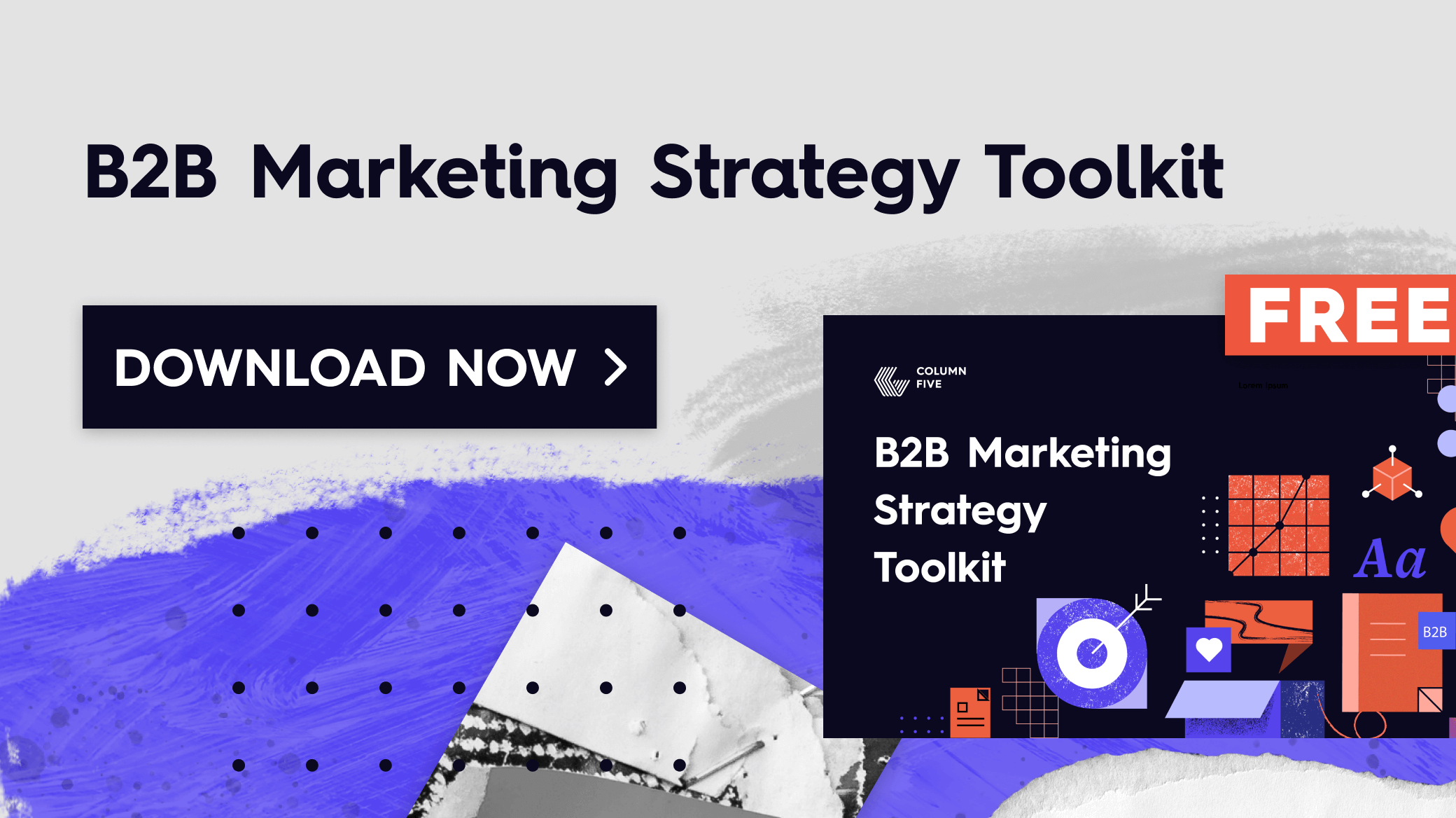One of the biggest bummers in B2B marketing—especially SaaS—is the lack of humanity. Whereas B2C is all about making creative content to cultivate emotional connections, the tech world has held onto the myth that B2B marketing shouldn’t be emotional. Unsurprisingly, most of the content we see is generic, impersonal, and uninspiring. And with the advent of AI, we’re likely to see more marketing strategies that feel like they were created by bots, for bots.
There is a glimmer of hope, though. If everyone in your industry is falling in line, churning out impersonal content that doesn’t center humans—or even speak to them—you have a huge opportunity to differentiate.
We spoke about this exact theme on our Best Story Wins podcast, where we welcomed Justin Rands, Director of Brand Design at Oyster HR. Oyster HR is a global employment platform that makes it easy to hire, pay, and care for team members anywhere in the world. They’re a SaaS company, but unlike many SaaS companies, they are well aware that their tech solution is built to service humans and only humans. For Rands and his team, that human-centric focus is the key to successful marketing. And it should be for your brand, too.
Luckily, we have the tips you need to build marketing strategies that resonate with humans (and make your brand stand out in the process).

5 Marketing Strategies to Connect With Your Audience
You might think your marketing is made for humans, but think again. How personable are your posts? How engaging are your articles? How enticing is your buyer journey? By infusing your marketing with a little more fun, delight, and personality, you can transform your entire marketing machine and convert far more people than before. If you’re not sure how to do it, here are five campaign ideas that tap into empathy, emotion, and your audience’s interests.
1) Tell stories about your brand’s beliefs.
Tech brands can tend to bleed together. With the same generic site design, language, and branding, it’s hard to differentiate a financial platform from a marketing automation platform. But one way you can stand out in the crowd is to boldly share your brand heart (including your purpose, vision, mission, and values) in your marketing campaigns. Humans are inherently drawn to others who share their beliefs—and people expect brands to be more transparent about their beliefs and values nowadays.
As Rands says, great brands that tell great stories are always speaking to the heart.
The more you can show people who you are and what you care about, the more people will both trust you and want to work with you.
Tip: Break your company values into story pillars, then brainstorm content about that. For example, if one of your values is “embrace innovation,” think of all the unique and creative ways you can demonstrate that: a behind-the-scenes tour of the lab, your team’s unique brainstorming techniques, etc.
Example: One of Slack’s core values is empathy. To put that value into practice and promote a cause they care about, they coproduced Home/Free, a documentary that shares the stories of three individuals (including a Slack software engineer) who faced the challenge of reentering society after incarceration. This unique piece of content is a fantastic way for a tech company to highlight a cause they care about in a meaningful way.
2) Spotlight your people.
The people behind your brand are the powerhouses and plowhorses who make the magic happen. But too often those people are kept in the shadows, eclipsed by talk of features and packages. But remember that leading with your humanity is not just a touch-feely gimmick. In the B2B world, every purchase requires the buy-in of a shocking number of decision-makers. Those people want to be assured that they are dealing with people they can trust, people they can rely on, and people who really know their sh*t.
Showcasing your people in authentic ways—and allowing them to be their authentic selves—is a great way to put human faces to your brand. For example, Rands says he is more than just Director of Brand Design. “I’m a dad, you know, I play basketball. I draw. I ride my bike,” Rands says. For the Oyster team, adding that layer of personality to things like photography helps showcase their team not just as employees but as, well, people.
The best part about this approach is that when you put your people front and center, you skip a lot of the pleasantries of early-stage marketing. From the jump, they can get to know the people behind your brand, including their perspectives, interests, and expertise.
There are all sorts of ways to do this.
- Spotlight your employees on social media.
- Turn your team members into content creators.
- Show people what a day in the life is like or how you celebrate your unique culture.
Showcasing your employer brand is an especially smart way to both show off who you are and attract the next batch of employees who will help drive your success.
Tip: People-centric imagery is one of the best ways to infuse your personality throughout your content. From your website to your social channels, add more faces to bring the brand to life.
Example: When we redesigned VideoAmp’s website, we made sure to infuse the site with people-centric imagery. Although their tool is a data-driven ad platform, our research found that site visitors were especially interested in the people behind the brand.
3) Build campaigns around real customers.
People want social proof when they make a purchase. (Again, as humans, we want the validation of others.) Customer success stories are one of the best ways to showcase how your tech can benefit people. But tech marketers often default to dry, boring case studies that aren’t interesting or engaging.
It’s important to remember that a case study is really the story of how you helped somebody. For this reason, it’s important to shape a compelling narrative.
- Identify the customer’s problem.
- Explain why the customer chose you.
- Share what you did to solve the problem.
- Highlight the impact on the business.
As you’re telling the story, think about ways to weave in the value and emotional benefits that your product or service provides. What you’re selling is the ideal future state for your customer—and that is steeped in emotion.
Tip: If you can, let the customer tell their own story in their own words. Putting customers front and center makes your brand more personable and reinforces the community you’re creating.
Example: Mailchimp turns their customers into stars of their success stories. In short, snappy, and energetic videos, they let customers introduce their business and explain how Mailchimp helps them.
4) Create content with your community.
One of the biggest things that tech brands underutilize is their community. In fact, many Silicon Valley “innovators” focus too much on the product and not the community that needs it. (But, hey, that’s a whole other podcast.)
In marketing, we see this as a missed opportunity. As much as the people behind your brand are a wealth of information, so are the people who buy from your brand (or will). You always want to look for ways to engage them, and creating content with them—or inspired by them—is a great way to do it.
- Use opinion polls to engage with them on social.
- Ask people to submit their best tricks and hacks for a roundup.
- Reach out to industry expert for their trend predictions.
Tip: For more ideas to incorporate UGC into your content strategy, here are 11 ways to create more content with your community.
Example: This very article was inspired by a conversation we had on Best Story Wins, the very podcast we created to engage with our community more. The conversations we have allow us to connect with industry peers, glean wisdom, and—most importantly—turn it into helpful content that provides value to our audience. It’s a win-win-win.
5) Share the lessons you’ve learned.
Vulnerability is one of the most human emotions, but too many brands are afraid to reveal any type of weakness. Not only does this close you off to your audience but it means both you—and your community—miss out on valuable conversations and learning opportunities.
We all take risks that don’t pay off. We all learn things the hard way. Turning these tough moments into content is a huge service to your community. It demonstrates that you’re willing to take a hit so they don’t have to. It shows that you’re constantly pushing yourself to grow and do more. And it creates more empathy between you and your audience.
Tip: Turn your fails into roundups of lessons learned or mistakes to avoid. It’s also great if you can encourage your community to share their wins or lessons too.
Example: Mailchimp created the Going Through It podcast to showcase how hard it can be to figure out when to quit and when to keep going. This topic is incredibly relatable to their audience and helps create a shared sense of community.
How to Create More Connections with Your Audience
One of the biggest reasons brands struggle to connect with their audience is because they don’t actually know who they are. See our guide to create a strong brand identity to ensure every piece of content you create truly communicates your brand and personality. Then, as you continue to evolve your content strategy, look for more ways to infuse your humanity into your buyer journey.
- Be a customer-first company. Too many brands focus on themselves instead of serving their audience. Try these tips to make sure you’re putting people first.
- Intrigue them. See our tips to create marketing that pushes the envelope.
- Show your sense of humor. Find out how to make marketing that isn’t boring.
Most importantly, look to the experts in your industry to see how they are capturing hearts, minds, and market share. Subscribe to the Best Story Wins podcast for more tips on B2B storytelling, and if you need help bringing your content to life, follow our tips to find the right agency partner. (If you want to start your hunt with us, take a look at our FAQs or reach out.)
Above all, remember that the human part of marketing is about evolution and experimentation. Try new things, track the results, and adjust accordingly. Good luck out there.






